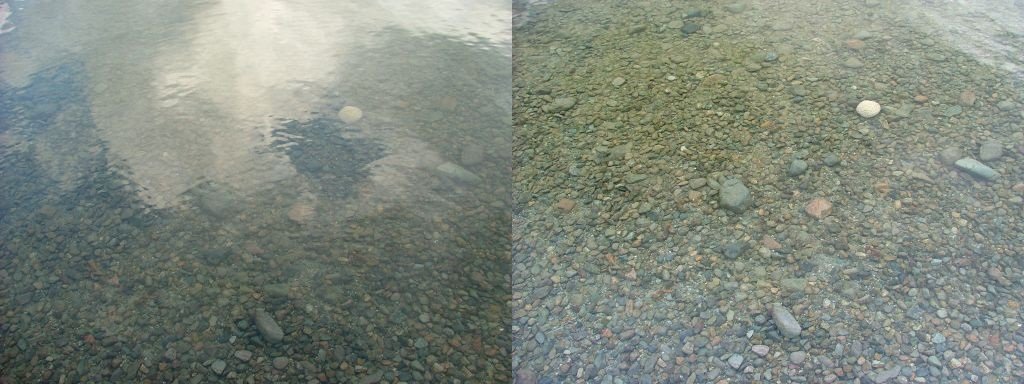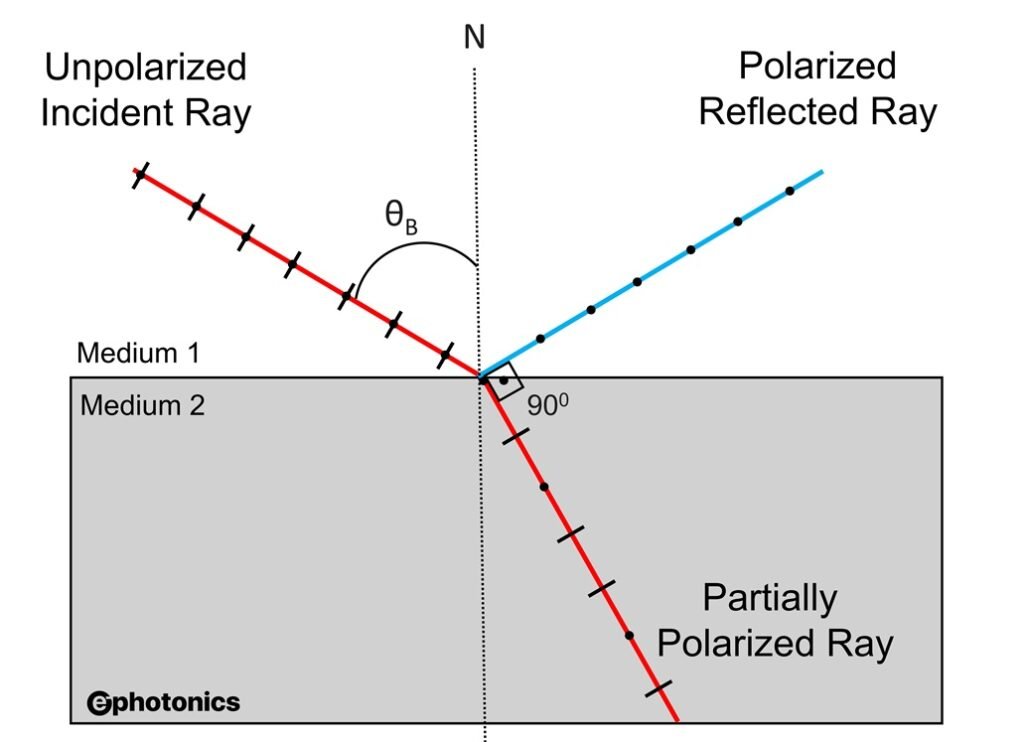If ever reflection and polarization of light puzzled you, you probably have heard something about Brewster’s angle. In fact, such an interesting optical effect has found broad application in quite a few fields of activity, beginning with laser systems and photography, and ending with many others. In the following article, we will explain what Brewster’s angle is, how it works, and why it is so important.
Brewster’s angle, also called polarization angle, is that particular angle at which light of a certain polarization passes through a transparent surface without reflection. In other words, it is an angle at which light approaches a surface and reflects from it so that the light becomes completely polarized. This means the reflected light vibrates in only one direction rather than in several directions.
A good visual representation to understand the concept of Brewster’s angle and polarization of light. The image demonstrates how reflections and glare can be minimized using polarization.
On the left side of the image, the reflection from the water’s surface is prominent, obscuring the view of the stones beneath the surface. On the right side, the reflected glare is reduced by chosing good angle close to Brewster’s angle.

Image taken from Wikipedia
Part of the light bounces back at the boundary between two different materials which that light hits, while another part of it manages to get through. However, the reflected part of the light will always be polarized unless that incident on the surface is at Brewster’s angle.
Brewster’s angle can be calculated using the following formula:
$$\tan(\theta_B) = \frac{n_2}{n_1}$$
where:
This equation tells us that Brewster’s angle depends on the refractive indices of the two materials the light is passing through. In most cases, Brewster’s angle is around 56 degrees when light transitions from air (n = 1) to glass (n = 1.5).
If you would like to calculate Brewster’s angle by using refractive indices of two medium, you could use our simple Brewster’s angle calculator designed for that.

Understanding and using Brewster’s angle is crucial in many fields.
In photography, photographers often use polarizing filters to reduce glare and reflections from water or glass surfaces. The filter works best at Brewster’s angle, allowing you to capture clearer and more vivid images.
In laser technology, brewster’s angle is used in laser cavities to maximize output power by eliminating unwanted reflections, especially in polarized light lasers.
Many optical coatings are designed to work at Brewster’s angle to reduce the amount of reflection from lenses, improving the performance of devices like cameras and microscopes.
Brewster’s angle has far-reaching implications in science and technology. By understanding this angle, scientists and engineers can control the polarization of light, which is essential for various types of optical measurements and experiments. It also helps minimize light loss and improve the efficiency of optical systems.
At Brewster’s angle, light is perfectly polarized upon reflection, meaning that the reflected light vibrates in one direction. This results in no reflection of light with the same polarization as the incoming light.
In optics, Brewster’s angle is used to minimize unwanted light reflections, which is crucial for improving the performance of optical systems such as lasers, microscopes, and cameras.
– Brewster’s angle is named after the Scottish physicist Sir David Brewster, who first discovered this phenomenon in 1815
– In laser optics, Brewster’s angle is used to design windows and mirrors that ensure the laser beam remains perfectly polarized, optimizing performance and reducing light losses.
– Brewster’s angle plays a role in reducing glare on water surfaces. It’s the reason why sunsets over the ocean look so mesmerizing with that perfect, smooth reflection.
Join our newsletter to stay updated with new articles and news!

ephotonics is a go-to partner for photonics solutions, with deep expertise in laser electronics and laser design. We’re committed to delivering effective solutions for laser-based applications and sharing helpful articles. To learn more about us, check out our About page.